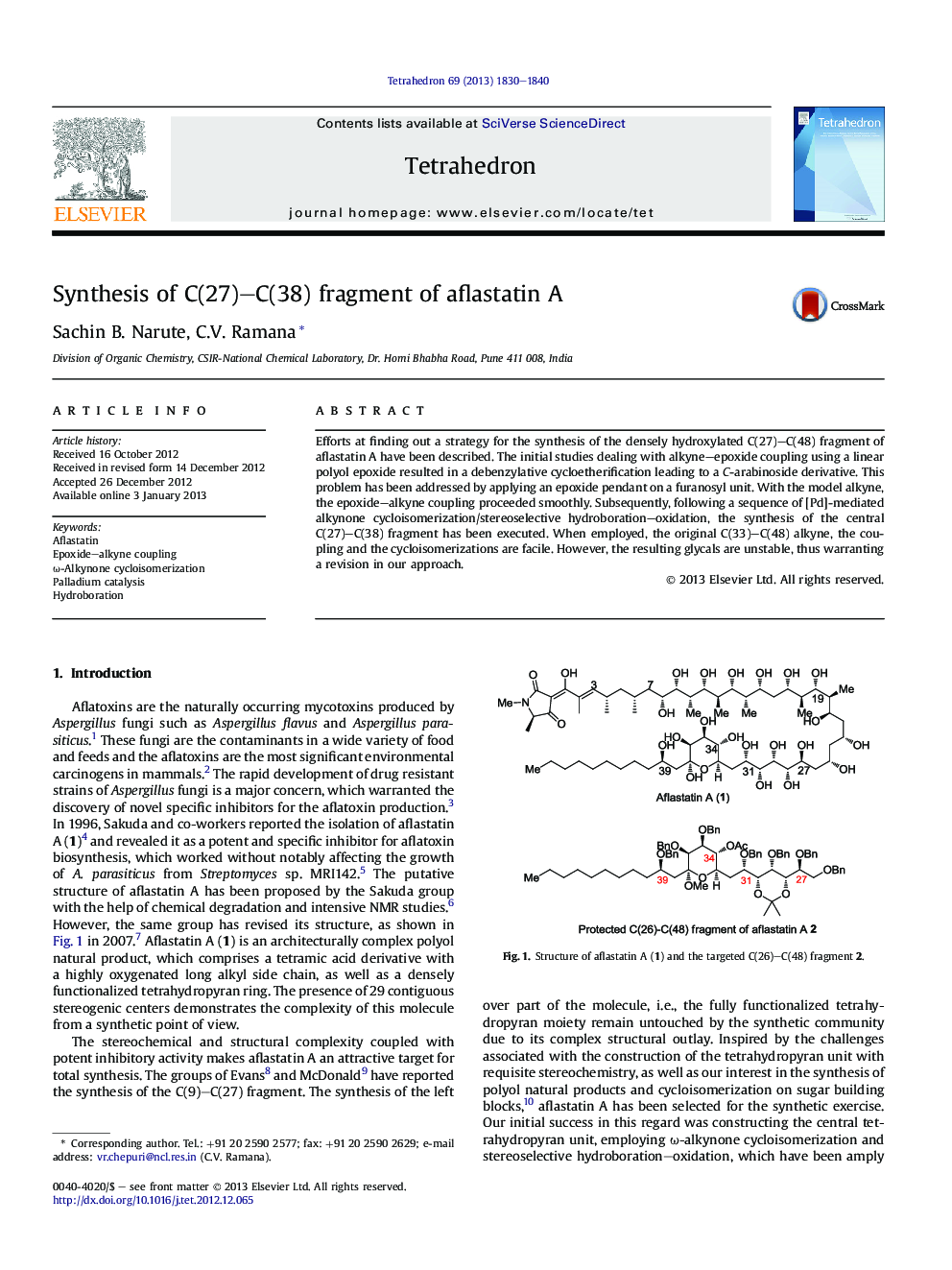| Article ID | Journal | Published Year | Pages | File Type |
|---|---|---|---|---|
| 5218280 | Tetrahedron | 2013 | 11 Pages |
Efforts at finding out a strategy for the synthesis of the densely hydroxylated C(27)-C(48) fragment of aflastatin A have been described. The initial studies dealing with alkyne-epoxide coupling using a linear polyol epoxide resulted in a debenzylative cycloetherification leading to a C-arabinoside derivative. This problem has been addressed by applying an epoxide pendant on a furanosyl unit. With the model alkyne, the epoxide-alkyne coupling proceeded smoothly. Subsequently, following a sequence of [Pd]-mediated alkynone cycloisomerization/stereoselective hydroboration-oxidation, the synthesis of the central C(27)-C(38) fragment has been executed. When employed, the original C(33)-C(48) alkyne, the coupling and the cycloisomerizations are facile. However, the resulting glycals are unstable, thus warranting a revision in our approach.
Graphical abstractDownload full-size image
